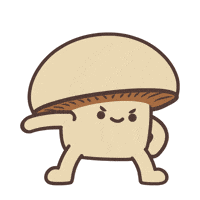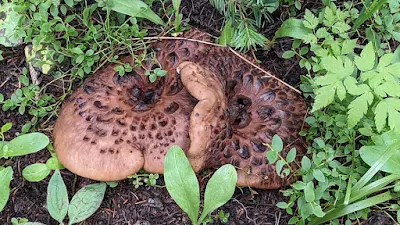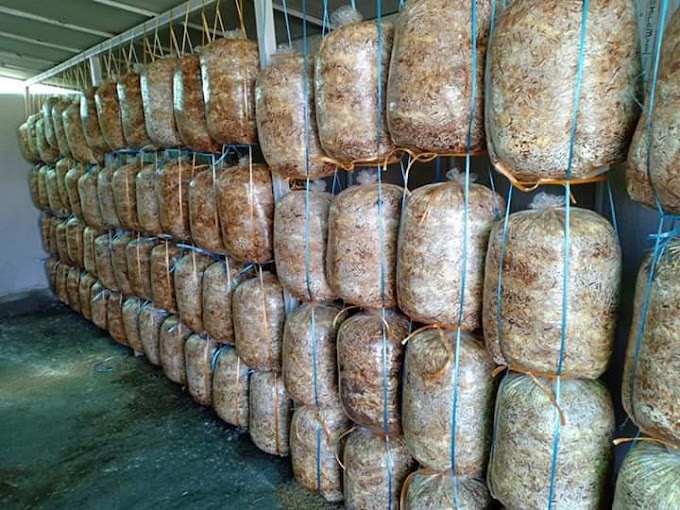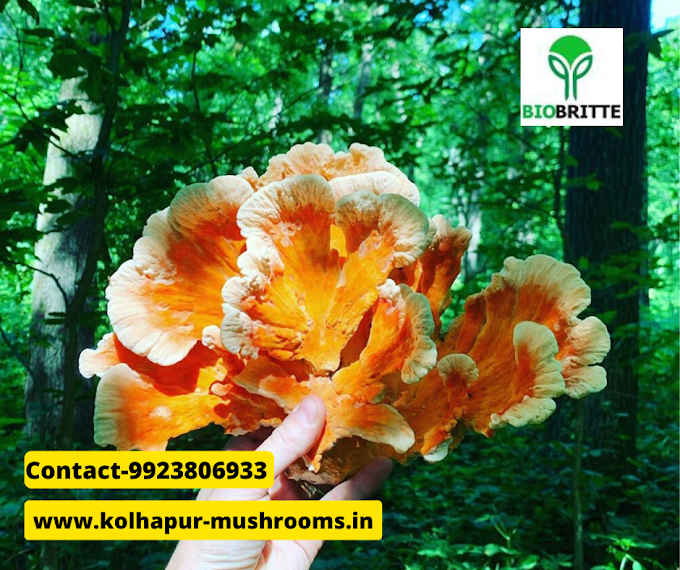Polyporus tuberaster mushrooms | Mushroom types | Biobritte mushrooms
Polyporus tuberaster mushrooms
Synonyms: Polyporus decurrens Underwood; Polyporus mcmurphyi Murr.
Pileus
Fruiting body annual, cap 50 to 150 mm broad, round to semicircular in outline, convex, becoming plane, depressed to infundibuliform; margin incurved when young, sometimes upturned in age; surface buff, ochre, tawny to brown, covered with dark fibrils, and scales, the latter often with erect tips; context pallid, up to 10 mm thick, tough, hard when dry; odor and taste not determined.
Hymenophore
Pores white, cream, to pale tan, 2-3/mm, round, angular, to irregular in shape, edges entire to dentate; tube layer 1-3 mm in depth, concolorous with the pores.
Stipe
Stipe 30-70 x 15-30 (40) mm thick, solid, fleshy-tough, round, equal to enlarged at the base, cap attachment central, eccentric to occasionally lateral; surface concolorous with the cap or lighter, pores descending the apex a short distance, sometimes leaving reticulations; terrestrial fruitings attached to a belowground dark brown to blackish, irregularly shaped sclerotium.
Spores
Spores 10-16 x 4-6.5 microns, oblong-cylindrical, smooth, thin-walled, hyaline, inamyloid; spores white in deposit.
Habitat
Mostly solitary, terrestrial, occasional on downed wood of various hardwood trees such as oaks (Quercus spp.), willows (Salix spp.), and madrone (Arbutus menziesii), etc.; fruiting after fall rains along the coast; uncommon.
Edibility
EdibleYoung specimens edible if thoroughly cooked; sclerotium inedible.
Some comments
- Polyporus tuberaster is a ground-dwelling polypore (with some exceptions) that from a distance could be mistaken for a gilled mushroom.
- The cap is buff, tawny to brownish, covered with small dark scales, often with raised tips.
- A whitish, decurrent pore layer and central to eccentric stipe are also helpful field marks.
- Fruiting bodies of Polyporus tuberaster are unusual in that they develop from an underground blackish potato-like tuber called a sclerotium, thought to be a resting stage or storage structure.
Apocryphal stories aside, the blackish potato-like tubers are not edible, because of a tough texture and embedded dirt.
Polyporus tuberaster is occasionally found on downed wood. Whether a mycelial connection exists from these fruitings to a buried sclerotium is unknown.
Polyporus tuberaster can be confused with Polyporus squamosus, a similar but larger, strictly wood-dwelling species that have caps with coarser scales but these typically lack erect or tufted tips.
Additionally, sclerotium is not produced. Several members of the genus Albatrellus, another ground-dwelling polypore are also similar, but none have the combination of cap colors and scales of Polyporus tuberaster.
The Biobritte mushroom company is an ISO Certified company and top mushroom company all over India.
Mushroom consultants in India.
You can buy all types of mushroom products from the Biobritte cart.
For more info - https://biobritteagrosolutionspvtltd.in/shop.
Contact on a phone or WhatsApp 9923806933 or 7709709816.
Tags - Mushroom farming, mushroom cultivation training, Ganoderma mushroom supplier, mushroom seeds, mushroom spawn company, Biobritte store, Biobritte cart, Biobritte fungi school, Mushroom training, Biobritte mushroom training online, mushroom franchise, mushroom contract farming, mushroom buyback, mushroom repurchase, mushroom spawn supply, mushroom cultivation, organic mushrooms, oyster mushrooms, reishi mushrooms, wood ear mushrooms, cordyceps mushrooms, Is polyporus Tuberaster poisonous?, Are bracket fungi poisonous?, Are shelf fungi edible?, Are conks mushrooms?, polypore mushroom edible, polypore mushroom identification, dryad's saddle underside, bracket fungus edible, bracket fungus scientific name, types of conks, bracket fungi scientific name, polypore scientific name,








